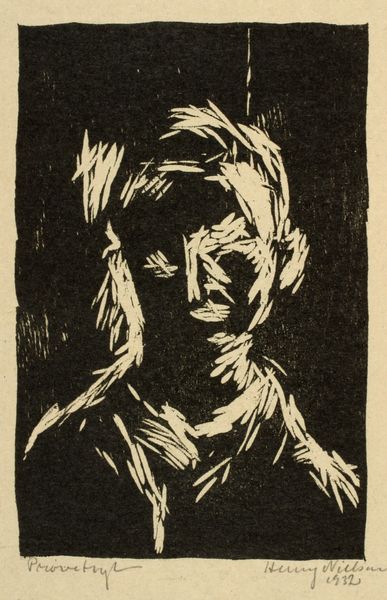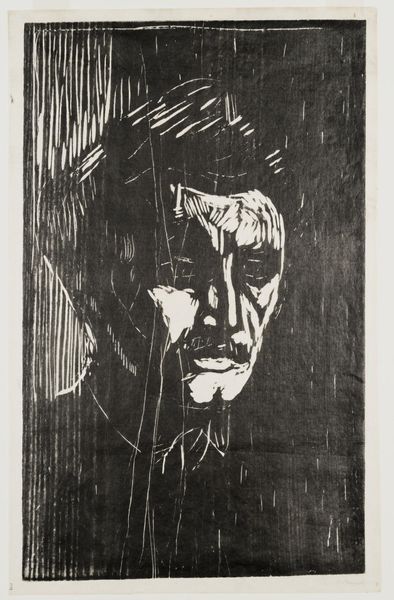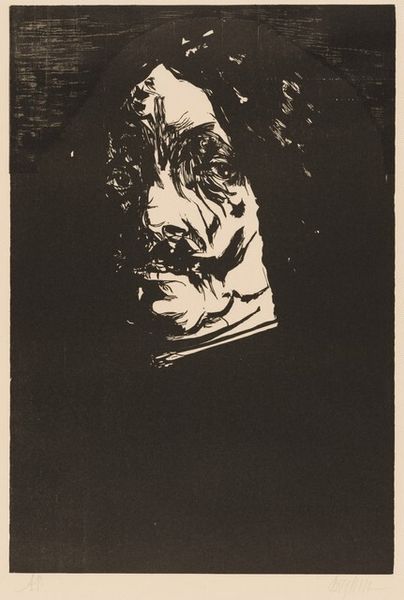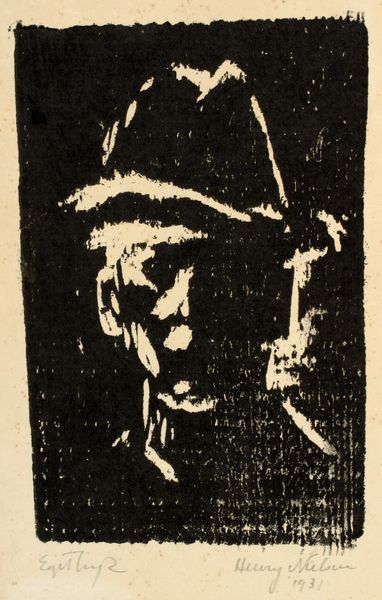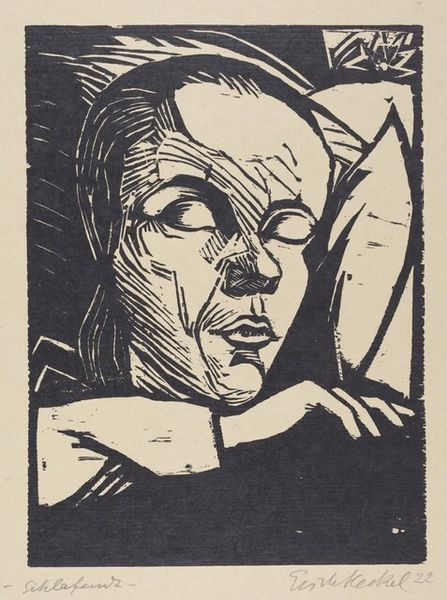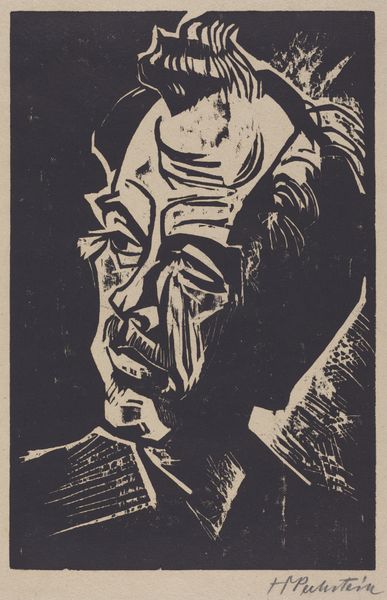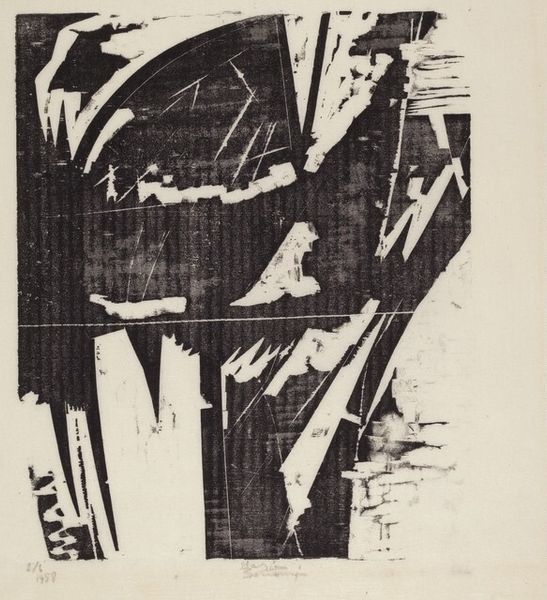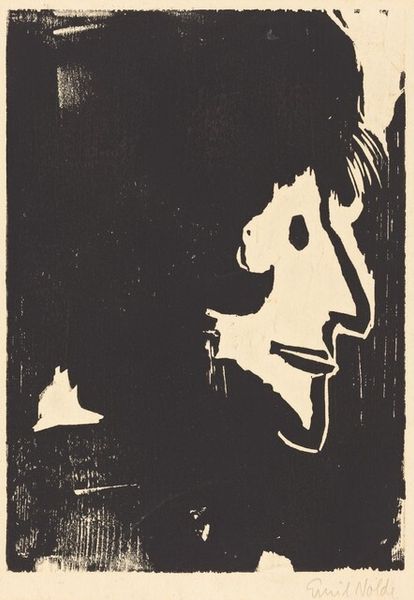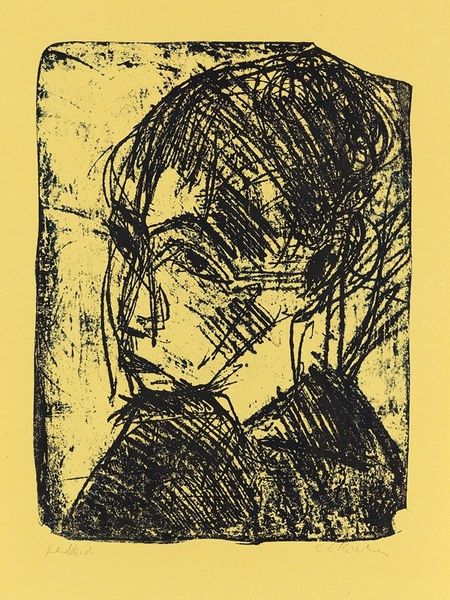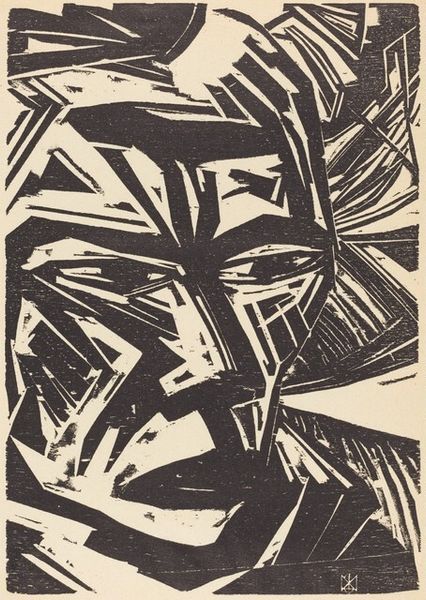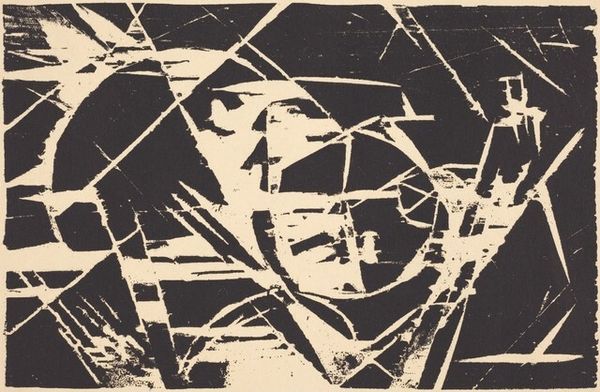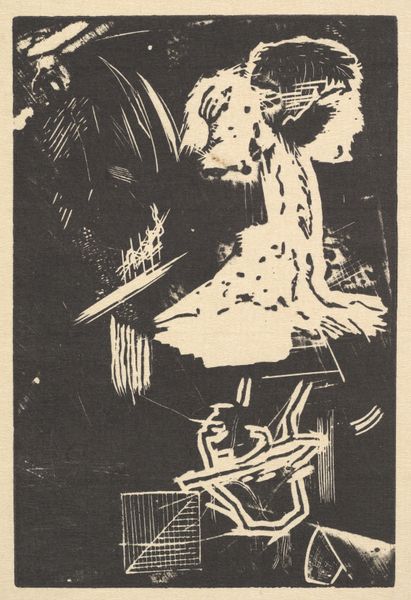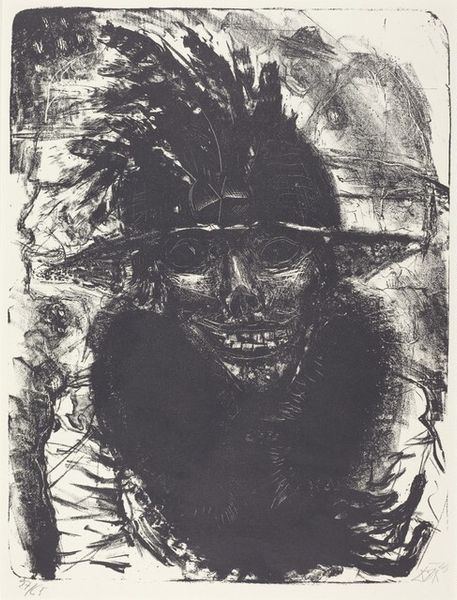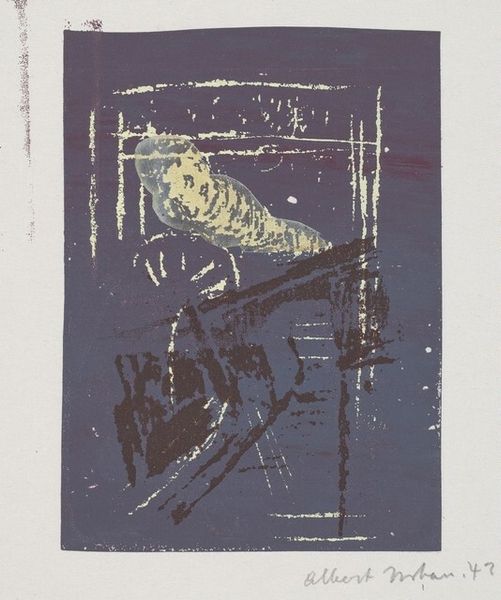
Dimensions: 147 mm (height) x 108 mm (width) (billedmaal)
Henry Nielsen made this woodcut portrait in 1932. Its stark contrasts and simplified forms are reminiscent of German Expressionism, a style popular in the early 20th century that used art to express intense emotions and comment on social issues. Created in Denmark, this image emerges from a specific cultural moment. Consider the economic hardships of the 1930s, which fueled social unrest across Europe and the rise of different political ideologies. The woodcut medium itself is relevant; its accessibility made it a popular choice for artists wanting to reach a wider audience and perhaps critique the traditional art establishment. The choice of a portrait suggests an interest in the individual, but the anonymity of the sitter raises questions about identity and representation during this period. To fully understand this work, we might research the artist’s biography, the socio-political context of Denmark in the 1930s, and the influence of German Expressionism on Scandinavian art. By examining these factors, we can begin to appreciate how this small print reflects the anxieties and aspirations of its time.
Comments
No comments
Be the first to comment and join the conversation on the ultimate creative platform.
